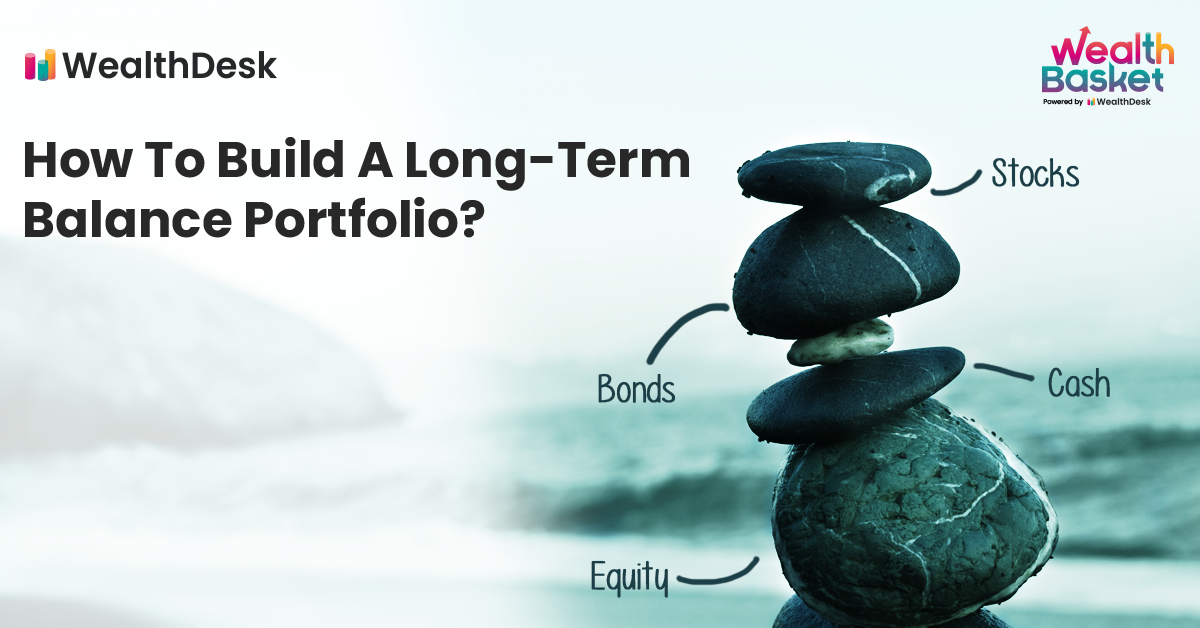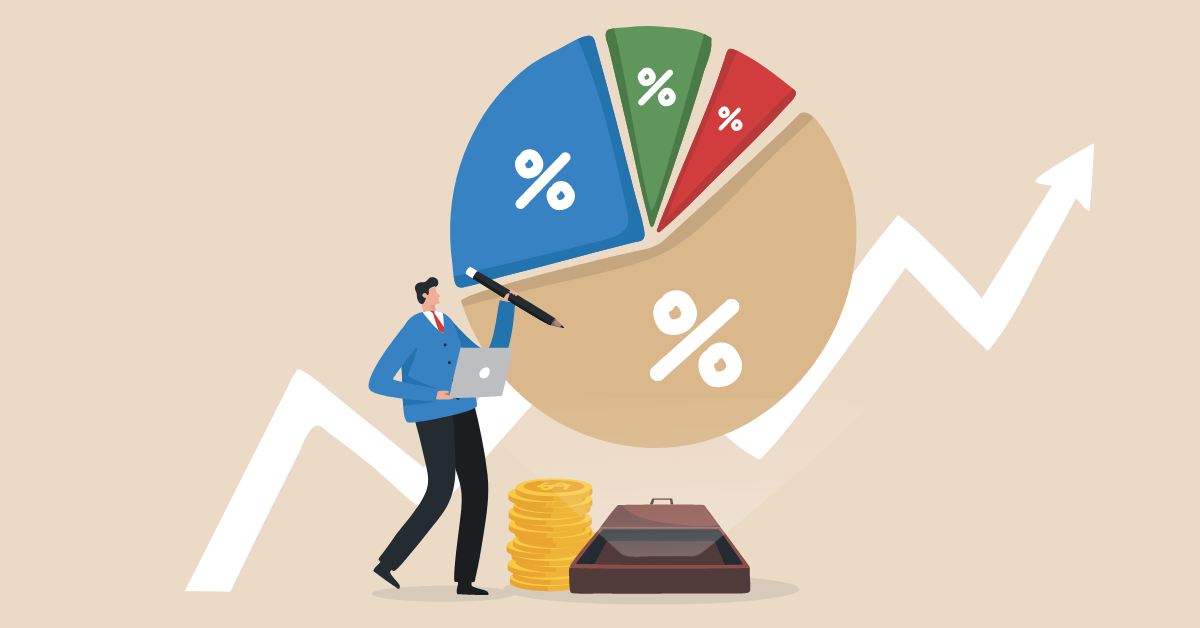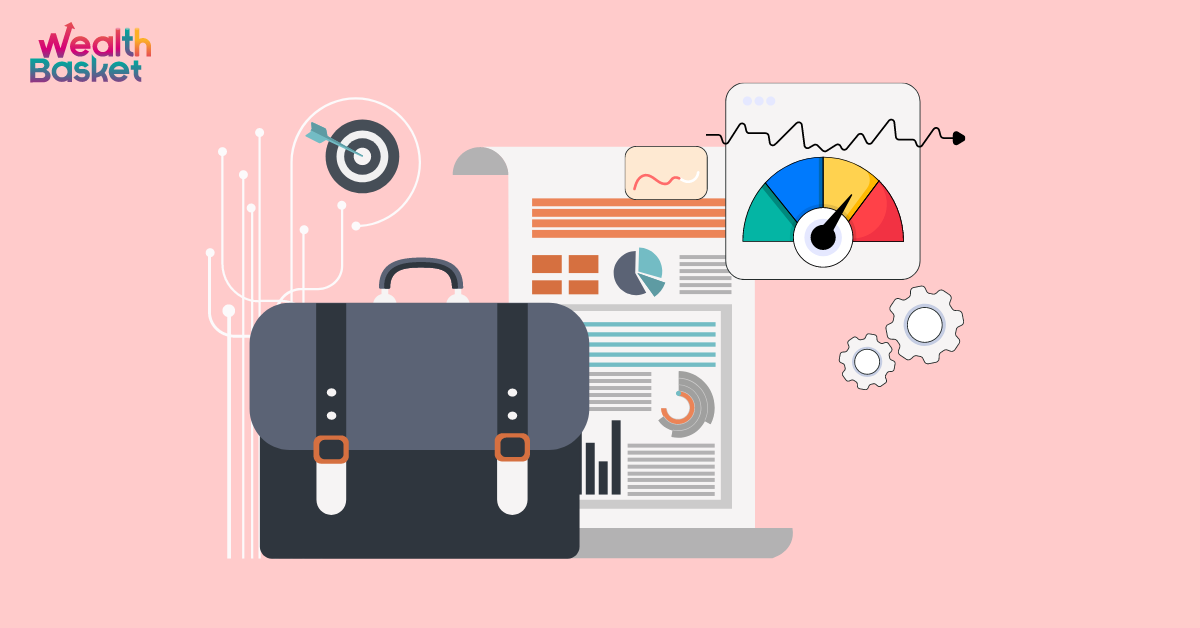To understand how to create a balanced portfolio, you first need to know how to make a portfolio. A portfolio is primarily a combination of stocks and bonds from different sectors. Depending on a number of factors, you can make your own portfolio composition in the way that suits you the best. Though any combination of investments can be called a portfolio, it is important to keep a goal and time frame in mind and manage your own investment portfolio to make it a balanced one by weighing the risks and returns for times when the market becomes volatile in the long term.
What Should a Balanced Portfolio Look Like?
A balanced portfolio is one where assets are carefully
allocated to mitigate risks. Traditionally, in a
balanced portfolio, the
portfolio diversification
percentages include 60% stocks and 40% bonds. Minor cash
or money market component may also be included in a
well-balanced portfolio for liquidity. However, it may
change depending on your risk tolerance and age. Younger
investors ideally have a more risk appetite than the
older ones as they have a lot more time to recover from
the losses, in case of investments turn south in the
near term.
Discover stocks that suit certain filter criteria and dive into details to check their WealthBaskets.
How to Make a Diversified Balanced Portfolio?
When you’re trying to make a balanced portfolio, first layout your objectives, both long term and short term, and take into consideration other factors like your risk tolerance and time.
Once you’re through, you need to now decide on what stocks and what bonds to buy. For example, a portfolio of equity mutual funds may be the most appropriate option for achieving long-term goals and objectives. Equity is an asset type that has the ability to outperform inflation while also providing superior long-term returns. However, they are volatile in the short term and are thus only ideal for the long run.
When you’re creating a balanced portfolio for the long run, the key is diversification. It minimizes risk and maximizes profit by investing in many sectors that react differently to the same occurrence. Diversification can assist an investor in managing risk and reducing stock price volatility. A general rule in diversification is the 5% rule that suggests, no more than 5% of your total investing capital should be invested into any single asset.
To keep a diversified balanced portfolio, consider investing in investment-grade funds like index funds, ETFs, and mutual funds. These investments are extensively diversified as they are meant to expose investors to a whole new stock market index or sector or the entire stock market as a whole. Additionally, you could also consider going global while doing your portfolio allocation. Global diversification doesn’t just let you take advantage of the growth in emerging markets. It also protects your portfolio from significant losses in case the Indian economy takes a hit while the global economy is performing well.
To make your job easier, below are some tips for you on creating a balanced portfolio:
- Asset allocation is the most critical aspect in defining a well-diversified portfolio’s predicted long-term performance and return variability. In other words, asset allocation is crucial in determining the total risk and return of a portfolio.
- All investments, including those that appear to be “safe,” have some risk. Before committing funds to a portfolio, investors should examine their risk tolerance and willingness to take risks, as not every asset is fit for every investor.
- Every investment is built on the foundation of research. With as much relevant information as possible, research aids the decision-making process. You can learn about a company’s health and future potential by conducting research on it.
- To retain liquidity in the portfolio, a well-balanced portfolio should include some cash. In the event of market fluctuations, liquidity will aid in rebalancing the portfolio. You would benefit from rebalancing as it would help them achieve higher returns.
By following the above steps, you’ll have the ability to not only create a balanced portfolio that minimizes risk in the long term but also helps earn maximum returns. As an investor, you just need to select the right mix of funds that align with your goals and objectives. Though in today’s world, with the help of the internet, you can choose to manage your funds on your own.
However, building the best investment portfolio for yourself can be a task. A wealth manager will not only relieve you of this but will help you invest in a portfolio with maximum returns while keeping risk at a minimum. Irrespective of what your need is, be it meeting a short-term goal or growing your money over time, WealthBaskets at Wealthdesk will help you meet every need of yours. WealthBaskets are professionally managed portfolios created and managed by SEBI registered investment advisors, who ensure consistent performance of the portfolio through in-depth research and analysis. Invest with the confidence that your money is safe, and sit back and relax!
FAQs
A balanced portfolio is typically a mix of 60% stocks and 40% bonds or a 50/50 within your investment holdings, depending upon investor risk appetite and investment horizon. The mix of stocks and bonds helps balance the risk level and your possible return on investments.
There is no correct time to rebalance your portfolio. You can either do it at specific time intervals or only when your portfolio becomes clearly unbalanced. There is no right or wrong way to rebalance your portfolio, but once or twice a year should do unless your portfolio’s value is exceptionally volatile.
Instead of risking all of your money on stocks, a balanced fund may help you invest wisely and safely. If you’re someone with a low-risk appetite, this is definitely the right thing for you.
As is obvious, diversification and optimal returns are achieved by minimizing the number of funds in your portfolio. Three to four funds, regardless of size, are sufficient to build a well-rounded portfolio that will increase your wealth. Examine the portfolios of the funds in detail to prevent overlaps.
An aggressive investment strategy is a style of a portfolio that attempts to maximize returns by taking a relatively higher degree of risk.


















